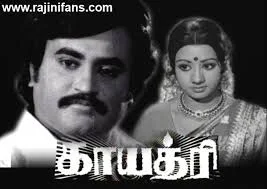Story & Direction: Lokesh Kanagaraj
 |
| https://www.tgv.com.my/movie/coolie |
In 1983, the Hindi cinema went agape when, during the shooting of the movie 'Coolie', Amitabh Bachchan sustained a serious injury. One of his stunts went awry. He landed on the floor instead of the table and sustained life-threatening intra-abdominal injury. His condition was serious. His heart stopped once, and he had to undergo multiple surgeries and time in the ICU. While he was in the hospital, the whole nation was in tenterhooks. Daily prayers were held whilst radio stations gave daily updates on his condition. Close to a hundred thousand people turned up during the recommencement of shooting. The people's response to the turn of events was so eclectic that the moviemakers changed the ending of the movie. Bachchan's character was supposed to die, but it was decided that he should live. It smashed all box office returns at that time. Coincidentally, the protagonist was a Muslim donning the railway porter tag, which bore the number '786', which is a significant number to Indian Muslims culturally. It is linked to divine salutations 'Bismullah Rahmani Rahim'. His character helped to strengthen the fractured Muslim-Hindu relations then, as well-wishers of both faiths had numerous prayers during Amitabh's trying times.
 |
| Do I see communist links? |
Amitabh Bachchan was so pleased with how it all turned out with the national support and the subsequent box office returns that he was heard to have mentioned in an interview that there can never be another Coolie. Another Coolie did come eventually by an actor elevated to Bachchan's status in the Southern cinema, Rajnikanth. This time, the Coolie tag carried the number 1421, the director's father's tag number when he worked diligently as a bus conductor.
As in most big cinema releases these days, a big buildup is created before its launch. First, they attack the social media spaces with announcements to rile the excitement. Then they will inaugurate the audio launch. It will give the impression as if everyone knows the song by heart and compel people to hum to the tune. After much hoopla, the movie would be launched with much pomp and splendour, like pouring barrels of milk over the actor's effigy. By that time, die-hard fans would be fighting tooth and nail trying to get tickets for the first day screening of the show.
This culture, which was mainly confined to the state of Tamil Nadu before, has now permeated into Malaysia.
Just the other day, a Malaysian social activist was relating her experience at a restaurant. It was about noon on a working day when she was having her meal. She noticed a young family of four, father, mother and two preteen children, engaged in a meal and deep conversation. She overheard them conversing about the first day, first show of Rajnikanth's 'Coolie' that they were about to watch.
The social worker was dumbfounded by how Rajni's movie, in the parents' eyes, could take precedence over sending their children to school. Times have changed much since Amma chided that nobody would be asked about Tamil movies in a scholarship interview.
Coolie is made to appease Rajnikanth's fans, period. It is like watching 'Kill Bill'. Nobody should ask who Bill is, and why we should kill Bill. Just Kill Bill, and it was so good that it needed a sequel.
Kudos to the story writers for being able to keep their audience engaged in this long movie, which actually had continuity. Nevertheless, there were some glaring faux pas, like an MPV cannot escape from a rickety motorcycle in a car chase and how the bad guys always have the opportunity to keep up with the good guys. Shhh! You are not supposed to ask questions. Kudos to his make-up team and CGI, Rajni, looks good for his part. The fighting scenes? Forget it. Ten, twenty, hundred, no problem. He does not have to move much. The baddies will go flying without inflicting even an abrasion. At the end of the movie, he goes away with a band-aid on his temple. That is all.
 |
| Coolie (1995) |
(P.S. In 1995, there was a movie by the same name, Coolie, starring Mr Muscle Man and Mr Madras, Sarath Kumar and Meena.)























